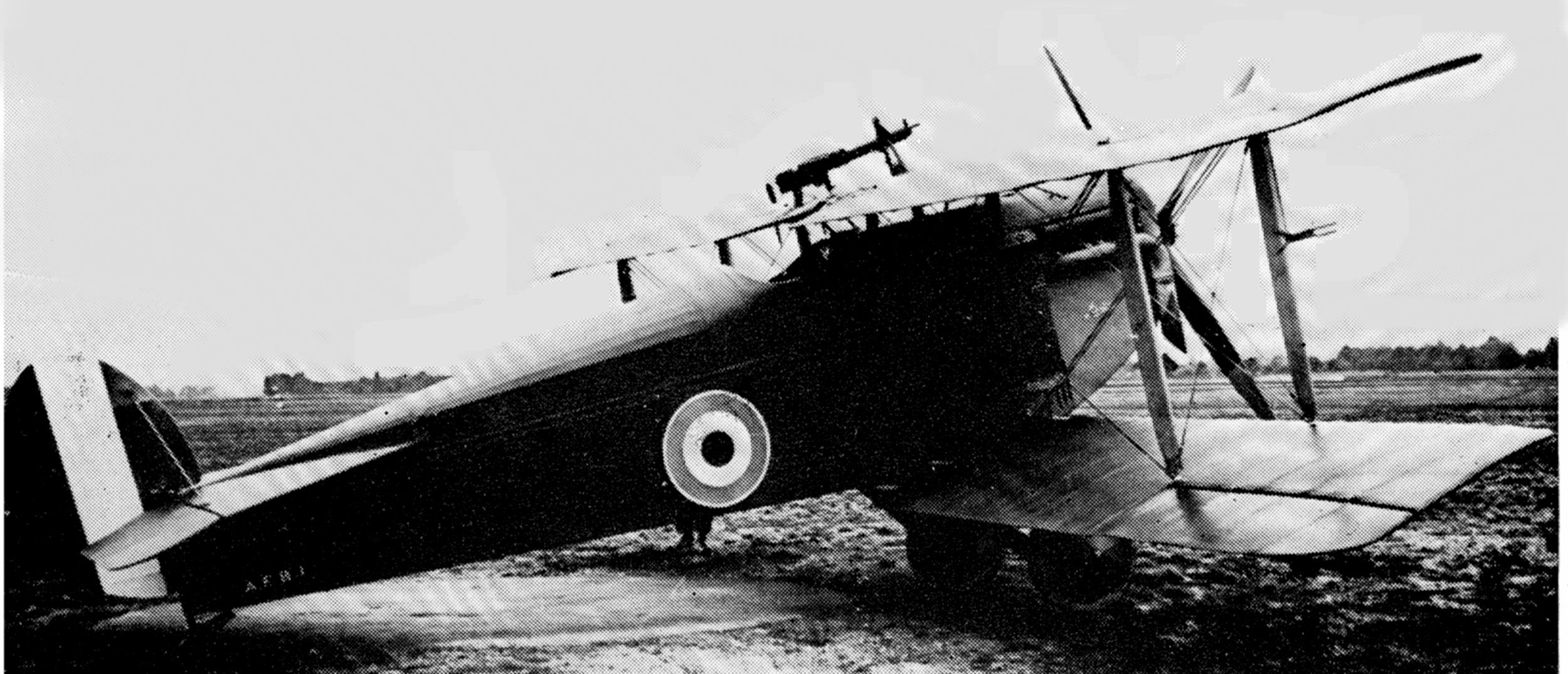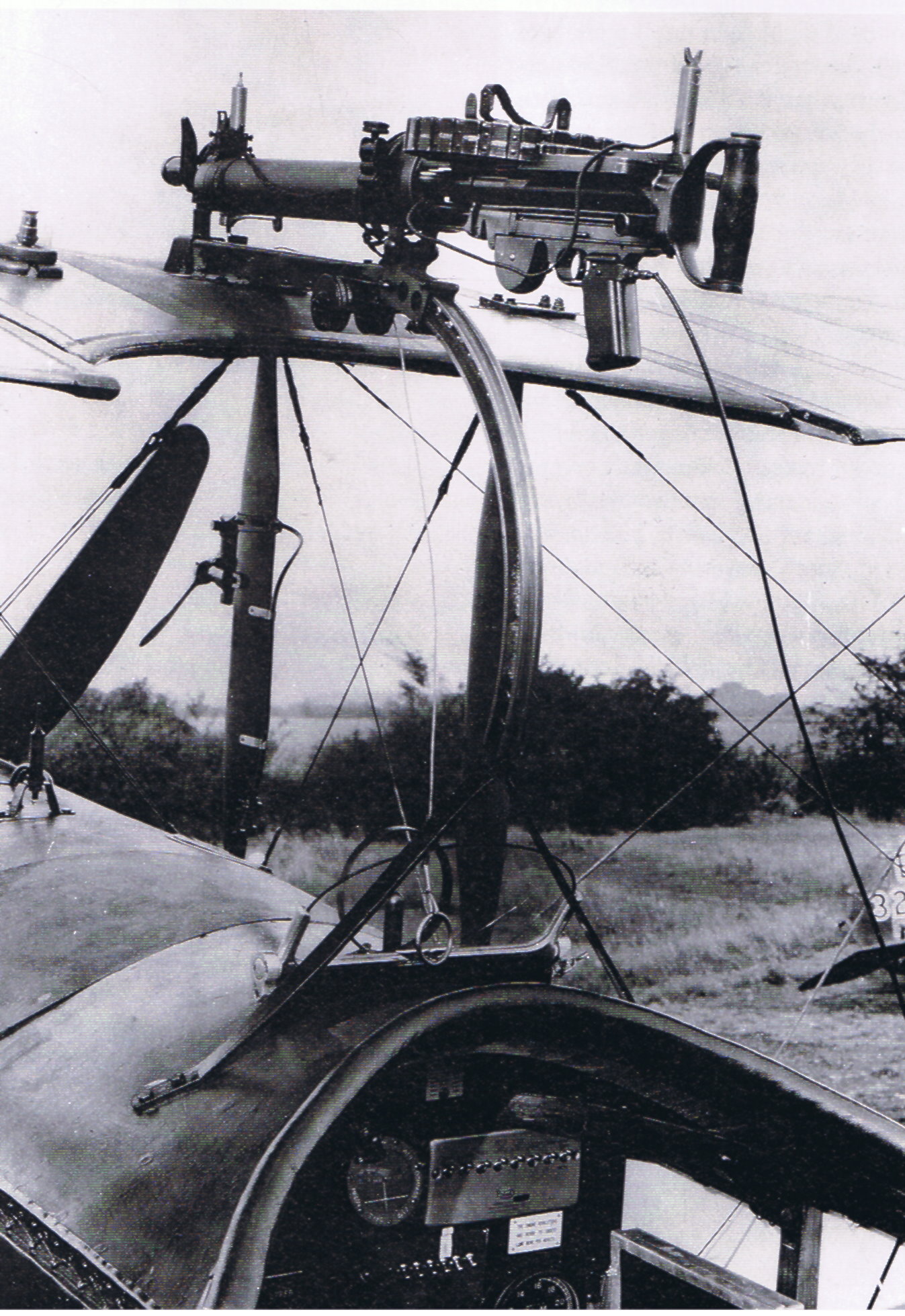|
Austin-Ball A.F.B.1
The Austin-Ball A.F.B.1 (Austin Fighting Biplane) was a British fighter plane of the First World War, built by the Austin Motor Company with design input from Britain's leading fighter ace at the time, Albert Ball. Although trials with the prototype were on the whole excellent, and it could very probably have been developed into a useful operational type, the A.F.B.1 did not go into production, as both Austin's production capacity and its Hispano-Suiza engine were required for the S.E.5a. Origins and design Original concept Albert Ball's interest in fighter aircraft design predated his first aerial victory. As early as 14 April 1916, he had written home to his father about the plans for a new fighter "heaps better than the Hun Fokker", although he made no claim that the plans were his own work. In a further letter he remarked that he could not post the plans, and was carrying them home the next time he received leave. Some writers have taken this to be an early reference to ... [...More Info...] [...Related Items...] OR: [Wikipedia] [Google] [Baidu] |
WikiProject Aircraft
A WikiProject, or Wikiproject, is a Wikimedia movement affinity group for contributors with shared goals. WikiProjects are prevalent within the largest wiki, Wikipedia, and exist to varying degrees within sister projects such as Wiktionary, Wikiquote, Wikidata, and Wikisource. They also exist in different languages, and translation of articles is a form of their collaboration. During the COVID-19 pandemic, CBS News noted the role of Wikipedia's WikiProject Medicine in maintaining the accuracy of articles related to the disease. Another WikiProject that has drawn attention is WikiProject Women Scientists, which was profiled by '' Smithsonian'' for its efforts to improve coverage of women scientists which the profile noted had "helped increase the number of female scientists on Wikipedia from around 1,600 to over 5,000". On Wikipedia Some Wikipedia WikiProjects are substantial enough to engage in cooperative activities with outside organizations relevant to the field at issue. For e ... [...More Info...] [...Related Items...] OR: [Wikipedia] [Google] [Baidu] |
War Office
The War Office was a department of the British Government responsible for the administration of the British Army between 1857 and 1964, when its functions were transferred to the new Ministry of Defence (MoD). This article contains text from this source, which is available under th Open Government Licence v3.0 © Crown copyright It was equivalent to the Admiralty, responsible for the Royal Navy (RN), and (much later) the Air Ministry, which oversaw the Royal Air Force (RAF). The name 'War Office' is also given to the former home of the department, located at the junction of Horse Guards Avenue and Whitehall in central London. The landmark building was sold on 1 March 2016 by HM Government for more than £350 million, on a 250 year lease for conversion into a luxury hotel and residential apartments. Prior to 1855, 'War Office' signified the office of the Secretary at War. In the 17th and 18th centuries, a number of independent offices and individuals were re ... [...More Info...] [...Related Items...] OR: [Wikipedia] [Google] [Baidu] |
RAF Martlesham Heath
Royal Air Force Martlesham Heath or more simply RAF Martlesham Heath is a former Royal Air Force station located southwest of Woodbridge, Suffolk, England. It was active between 1917 and 1963, and played an important role in the development of Airborne Interception radar. History RFC/RAF prewar use Martlesham Heath was first used as a Royal Flying Corps airfield during the First World War. In 1917 it became home to the Aeroplane Experimental Unit, RFC which moved from Upavon with the site named as the Aeroplane Experimental Station which became the Aeroplane Experimental Establishment (Home) in 1920 which became the Aeroplane and Armament Experimental Establishment (A&AEE) in 1924. The A&AEE carried the evaluation and testing of many of the aircraft types and much of the armament and other equipment that would later be used during the Second World War. No. 22 Squadron RAF and No. 15 Squadron RAF were present during the 1920s. No. 64 arrived in the 1930s. RAF Fighter Command ... [...More Info...] [...Related Items...] OR: [Wikipedia] [Google] [Baidu] |
Prototype
A prototype is an early sample, model, or release of a product built to test a concept or process. It is a term used in a variety of contexts, including semantics, design, electronics, and Software prototyping, software programming. A prototype is generally used to evaluate a new design to enhance precision by system analysts and users. Prototyping serves to provide specifications for a real, working system rather than a theoretical one. In some design workflow models, creating a prototype (a process sometimes called materialization) is the step between the Formal specification, formalization and the evaluation of an idea. A prototype can also mean a typical example of something such as in the use of the derivation 'prototypical'. This is a useful term in identifying objects, behaviours and concepts which are considered the accepted norm and is analogous with terms such as stereotypes and archetypes. The word ''wikt:prototype, prototype'' derives from the Greek language, Greek ... [...More Info...] [...Related Items...] OR: [Wikipedia] [Google] [Baidu] |
Foster Mounting
The Foster mounting was a device fitted to some fighter aircraft of the Royal Flying Corps during the First World War. It was designed to enable a machine gun (in practice, a Lewis Gun) to fire ''over'', rather than ''through'' the arc of the spinning propeller. It took several forms when applied to different aircraft types, but all shared the feature of a quadrant shaped I-beam rail on which the gun could slide back and down in one movement. The primary purpose was to facilitate the changing of spent ammunition drums, but some pilots also found that the mounting permitted the gun to be fired directly upward or at an angle, permitting a fighter aircraft to attack an opponent from beneath. Background Before the ready availability of a reliable synchronization gear, several methods were tried to mount a machine gun in a position from which it would be able to fire ''past'' rather than ''through'' the arc of the propeller.Cheesman 1960, p. 176. Even after reasonably reliable synchro ... [...More Info...] [...Related Items...] OR: [Wikipedia] [Google] [Baidu] |
LFG Roland C , 2021 American documentary film
{{Disambiguation ...
LFG may refer to: * Landfill gas, a waste gas containing methane and other gases emitted by landfills * Lexical functional grammar, a theory of syntax * Lagged Fibonacci generator, an example of a pseudorandom number generator * "Looking for group", a phrase often used in MMORPGs such as ''World of Warcraft'' * Looking for Group, a fantasy-based webcomic * Luft-Fahrzeug-Gesellschaft, a German aircraft manufacturer of World War I, known primarily for their "Roland" designs * LandAmerica Financial Group (NYSE: LFG), a Fortune 500 company that provides title insurance and other real estate transaction services * Lycée Français de Gavà Bon Soleil * LFG (film) ''LFG'' is a 2021 American documentary film, directed and produced by Andrea Nix Fine and Sean Fine, with Andrea Nix Fine also serving as a writer. It follows Megan Rapinoe, Jessica McDonald, Becky Sauerbrunn, Kelley O'Hara, Christen Press, Sam M ... [...More Info...] [...Related Items...] OR: [Wikipedia] [Google] [Baidu] |
Fuselage
The fuselage (; from the French ''fuselé'' "spindle-shaped") is an aircraft's main body section. It holds crew, passengers, or cargo. In single-engine aircraft, it will usually contain an engine as well, although in some amphibious aircraft the single engine is mounted on a pylon attached to the fuselage, which in turn is used as a floating hull. The fuselage also serves to position the control and stabilization surfaces in specific relationships to lifting surfaces, which is required for aircraft stability and maneuverability. Types of structures Truss structure This type of structure is still in use in many lightweight aircraft using welded steel tube trusses. A box truss fuselage structure can also be built out of wood—often covered with plywood. Simple box structures may be rounded by the addition of supported lightweight stringers, allowing the fabric covering to form a more aerodynamic shape, or one more pleasing to the eye. Geodesic construction Geo ... [...More Info...] [...Related Items...] OR: [Wikipedia] [Google] [Baidu] |
Dihedral (aircraft)
In aeronautics, dihedral is the angle between the left and right wings (or tail surfaces) of an aircraft. "Dihedral" is also used to describe the effect of sideslip on the rolling of the aircraft. Dihedral angle is the upward angle from horizontal of the wings or tailplane of a fixed-wing aircraft. "Anhedral angle" is the name given to negative dihedral angle, that is, when there is a ''downward'' angle from horizontal of the wings or tailplane of a fixed-wing aircraft. Dihedral angle has a strong influence on dihedral effect, which is named after it. Dihedral effect is the amount of roll moment produced in proportion to the amount of sideslip. Dihedral effect is a critical factor in the stability of an aircraft about the roll axis (the spiral mode). It is also pertinent to the nature of an aircraft's Dutch roll oscillation and to maneuverability about the roll axis. Longitudinal dihedral is a comparatively obscure term related to the pitch axis of an airplane. It ... [...More Info...] [...Related Items...] OR: [Wikipedia] [Google] [Baidu] |
Biplane
A biplane is a fixed-wing aircraft with two main wings stacked one above the other. The first powered, controlled aeroplane to fly, the Wright Flyer, used a biplane wing arrangement, as did many aircraft in the early years of aviation. While a biplane wing structure has a structural advantage over a monoplane, it produces more drag than a monoplane wing. Improved structural techniques, better materials and higher speeds made the biplane configuration obsolete for most purposes by the late 1930s. Biplanes offer several advantages over conventional cantilever monoplane designs: they permit lighter wing structures, low wing loading and smaller span for a given wing area. However, interference between the airflow over each wing increases drag substantially, and biplanes generally need extensive bracing, which causes additional drag. Biplanes are distinguished from tandem wing arrangements, where the wings are placed forward and aft, instead of above and below. The term is also ... [...More Info...] [...Related Items...] OR: [Wikipedia] [Google] [Baidu] |
Royal Aircraft Factory SE
Royal may refer to: People * Royal (name), a list of people with either the surname or given name * A member of a royal family Places United States * Royal, Arkansas, an unincorporated community * Royal, Illinois, a village * Royal, Iowa, a city * Royal, Missouri, an unincorporated community * Royal, Nebraska, a village * Royal, Franklin County, North Carolina, an unincorporated area * Royal, Utah, a ghost town * Royal, West Virginia, an unincorporated community * Royal Gorge, on the Arkansas River in Colorado * Royal Township (other) Elsewhere * Mount Royal, a hill in Montreal, Canada * Royal Canal, Dublin, Ireland * Royal National Park, New South Wales, Australia Arts, entertainment, and media * ''Royal'' (Jesse Royal album), a 2021 reggae album * ''The Royal'', a British medical drama television series * ''The Royal Magazine'', a monthly British literary magazine published between 1898 and 1939 * ''Royal'' (Indian magazine), a men's lifestyle bimonthly * Royal Te ... [...More Info...] [...Related Items...] OR: [Wikipedia] [Google] [Baidu] |






.jpg)